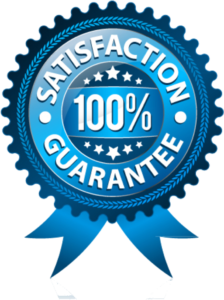26. Customer loyalty is an important method of:
26. Customer loyalty is an important method of:
A. creating new products.
B. promoting efficiency.
C. sustaining an advantage over competitors.
D. promotional pricing strategies.
E. all of the above.
27. Whenever Harry goes down on Bay Street to have
something to drink, he goes to Luther’s Pharmacy. There are many other
“watering holes” on Bay Street but Harry will only go to them if
Luther’s is closed. Luther’s has achieved __________________ from Harry.
A. customer loyalty
B. strategic acceptance
C. relative market share
D. value-based penetration
E. operational excellence
28. Banks have begun offering special accounts
designed to attract junior high school children. These kids save in very small
amounts creating more work than the account is probably worth to the bank but
bankers know consumers are creatures of habit and young people they service now
will likely become adult customers. These banks recognize:
A. operational excellence as a macro strategy.
B. the life-time value of customers.
C. product excellence leads to loyal customers.
D. segmentation, targeting, and positioning strategy.
E. diversification demographics.
29. The key to modern customer retention programs
is:
A. operational excellence as a macro strategy.
B. viewing customers with the life-time value perspective.
C. product excellence leads to transactional customers.
D. segmentation, targeting, and positioning strategy.
E. situational ethics.
30. Most marketers spend heavily on customer retention
programs, recognizing customer retention leads to:
A. product design excellence.
B. mission statement satisfaction.
C. sustainable price decreases.
D. increased long term profits.
E. producer excellence.
31. _________________ are an example of an
incentive-based customer loyalty program.
A. Frequent-flyer programs
B. Quantity discount incentives
C. Customer referral programs
D. Everyday low prices
E. Cost-based pricing programs
32. Narbonne’s, an upscale department store, instructs
sales personnel that whenever a customer asks where something is, they should
drop what they are doing and offer to escort the customer to what they are
looking for. The company’s reputation for excellent customer service has
resulted in:
A. product design excellence.
B. mission statement satisfaction.
C. sustainable price decreases.
D. a sustainable competitive advantage.
E. producer excellence.
33. Firms achieve ___________ through efficient
procedures and excellent supply chain management.
A. customer loyalty
B. strategic acceptance
C. relative market share
D. value-based penetration
E. operational excellence
34. Marketers want their firms to develop efficient
operations because:
A. it leads to lower prices or greater pricing flexibility.
B. marketers can then offer greater value to the customers.
C. it makes it easier to get the products customers want to them when they
want it.
D. it can lead to more attractive margins.
E. All of the above
35. Marketers want their firms to develop excellent
supply chain management and strong supplier relations so they can:
A. persuade stores to refuse to carry competitors’ products.
B. use their power and control within the supply chain to compel weaker
members of the supply chain to accept less favorable terms and agreements.
C. control prices and lock-in margins.
D. create competitive advantages.
E. develop information not available to others on strategic moves to help
with its own acquisitions and pricing.
36. Allen is in the marketing department of a
mid-sized firm that develops and sells communications systems. He is proud of
the Human Resources area in the company that provides the firm with excellent
employees. Allen himself really enjoys his work, but he knows the work of HR
helps create an advantage for the firm because:
A. customers appreciate the kind of service that knowledgeable employees
provide.
B. employees play a major role in the success of the firm.
C. it’s easier to communicate with and inspire the customer if the
employees really believe in what the firm is doing.
D. building customer loyalty depends on a committed workforce.
E. All of the above.
37. Which of the following represents a way to build a
sustainable competitive advantage using product excellence?
A. Being the first to offer customers desired features, even if
competitors can match these.
B. Positioning the product using a clear, distinctive brand image.
C. Having the most features on each model.
D. Focusing on being cutting edge and continually eliminating older
features though this may alienate some customers.
E. All of the above.
38. Product excellence occurs through:
A. customer loyalty
B. strategic acceptance
C. branding and positioning
D. value-based penetration
E. operational excellence
39. For many years, Southwest Airlines distinguished
itself as the low-cost airline. Now, many other low-cost competitors have
entered the market. Similarly, Southwest was one of the first airlines to offer
online ticketing. Now, all airlines have online ticketing. These examples
suggest:
A. no single strategy is likely to be sufficient to build a sustainable
competitive advantage.
B. situation analysis is a continuous process.
C. marketing is a never-ending story.
D. product excellence is the best source of a sustainable competitive
advantage.
E. all of the above
40. “Effective marketing doesn’t just
happen.” It is:
A. promoted through STP analysis.
B. imagined.
C. planned.
D. introduced through control phase SBUs.
E. the result of competitor’s failures.
41. Building a competitive advantage based on location
is sustainable because:
A. mobile marketing has not yet proven its value for most customers.
B. real estate prices have been dropping.
C. few marketers are aware of its importance yet.
D. it is not easily duplicated.
E. the internet has diminished the importance of “brick and
mortar” stores.
42. Of the five steps to the strategic marketing
planning process, which step usually comes in the MIDDLE of the process?
A. evaluate performance
B. define the business mission.
C. situation analysis
D. implement marketing mix and resources.
E. identifying and evaluating opportunities.
43. Brenda works as a caterer at many business
functions. Pump-N-Slurp convenience store chain has just had their annual
meeting and left behind copies of their marketing plan. Brenda opens a copy of
their plan. Which of the following would Brenda likely find in Pump-N-Slurp’s
marketing plan?
A. a situation analysis.
B. opportunities for the firm
C. perceived threats to the firm.
D. marketing objectives.
E. all of the above.
44. Carla has been directed by her regional marketing
manager to cut prices on seasonal items, submit an ad in the local paper, and
tell distributors to reduce deliveries for the next month. Which stage of the
strategic marketing planning process is Carla engaged in?
A. evaluate performance
B. define the business mission.
C. situation analysis
D. implement marketing mix and resources.
E. identifying and evaluating opportunities.
45. When conducting a SWOT analysis, in what phase of
the strategic marketing process is an organization presently engaged?
A. planning
B. implementation
C. control
D. segmentation
E. all of the above.
46. Violet’s company has just purchased a small
software manufacturer. Violet has been charged to assess what the new company
will do as part of her company and what will be needed to address this
question. Violet is engaged in the ____________ stage of the strategic
marketing planning process.
A. evaluate performance
B. define the business mission
C. situation analysis
D. implement marketing mix and resources
E. identifying and evaluating opportunities
47. The automobile manufacturing industry closely
watches the annual consumer satisfaction survey. For years, Japanese car
companies have consistently had the highest levels of customer satisfaction,
creating a ____________ for these companies.
A. strategic marketing plan
B. control phase mission advantage
C. STP cost
D. sustainable competitive advantage
E. diversification strategy
48. Which of the following is LEAST likely to be a
sustainable competitive advantage?
A. lowering prices.
B. brand name.
C. customer satisfaction.
D. patented technology.
E. supply chain efficiency.
49. The cereal industry is dominated by four
companies. These firms produce large volumes, promote heavily, and through
slotting allowance payments control access to the supermarket shelves.
Combined, these four firms have:
A. value-based customer care.
B. successful mission-goal statements.
C. sustainable competitive advantages.
D. market segmentation sufficiency.
E. strategic business acumen.
50. Even when big-box discount retailers enter a
market, some small, local retailers survive and prosper. These retailers have
developed a _________________ generating long-term profitability.
A. value-based customer avoidance
B. successful mission-goal statements
C. sustainable competitive advantage
D. market segmentation sufficiency
E. strategic business simulation26. Customer loyalty is an important method of:
A. creating new products.
B. promoting efficiency.
C. sustaining an advantage over competitors.
D. promotional pricing strategies.
E. all of the above. 27. Whenever Harry goes down on Bay Street to have
something to drink, he goes to Luther’s Pharmacy. There are many other
“watering holes” on Bay Street but Harry will only go to them if
Luther’s is closed. Luther’s has achieved __________________ from Harry.
A. customer loyalty
B. strategic acceptance
C. relative market share
D. value-based penetration
E. operational excellence 28. Banks have begun offering special accounts
designed to attract junior high school children. These kids save in very small
amounts creating more work than the account is probably worth to the bank but
bankers know consumers are creatures of habit and young people they service now
will likely become adult customers. These banks recognize:
A. operational excellence as a macro strategy.
B. the life-time value of customers.
C. product excellence leads to loyal customers.
D. segmentation, targeting, and positioning strategy.
E. diversification demographics. 29. The key to modern customer retention programs
is:
A. operational excellence as a macro strategy.
B. viewing customers with the life-time value perspective.
C. product excellence leads to transactional customers.
D. segmentation, targeting, and positioning strategy.
E. situational ethics. 30. Most marketers spend heavily on customer retention
programs, recognizing customer retention leads to:
A. product design excellence.
B. mission statement satisfaction.
C. sustainable price decreases.
D. increased long term profits.
E. producer excellence. 31. _________________ are an example of an
incentive-based customer loyalty program.
A. Frequent-flyer programs
B. Quantity discount incentives
C. Customer referral programs
D. Everyday low prices
E. Cost-based pricing programs 32. Narbonne’s, an upscale department store, instructs
sales personnel that whenever a customer asks where something is, they should
drop what they are doing and offer to escort the customer to what they are
looking for. The company’s reputation for excellent customer service has
resulted in:
A. product design excellence.
B. mission statement satisfaction.
C. sustainable price decreases.
D. a sustainable competitive advantage.
E. producer excellence. 33. Firms achieve ___________ through efficient
procedures and excellent supply chain management.
A. customer loyalty
B. strategic acceptance
C. relative market share
D. value-based penetration
E. operational excellence 34. Marketers want their firms to develop efficient
operations because:
A. it leads to lower prices or greater pricing flexibility.
B. marketers can then offer greater value to the customers.
C. it makes it easier to get the products customers want to them when they
want it.
D. it can lead to more attractive margins.
E. All of the above 35. Marketers want their firms to develop excellent
supply chain management and strong supplier relations so they can:
A. persuade stores to refuse to carry competitors’ products.
B. use their power and control within the supply chain to compel weaker
members of the supply chain to accept less favorable terms and agreements.
C. control prices and lock-in margins.
D. create competitive advantages.
E. develop information not available to others on strategic moves to help
with its own acquisitions and pricing. 36. Allen is in the marketing department of a
mid-sized firm that develops and sells communications systems. He is proud of
the Human Resources area in the company that provides the firm with excellent
employees. Allen himself really enjoys his work, but he knows the work of HR
helps create an advantage for the firm because:
A. customers appreciate the kind of service that knowledgeable employees
provide.
B. employees play a major role in the success of the firm.
C. it’s easier to communicate with and inspire the customer if the
employees really believe in what the firm is doing.
D. building customer loyalty depends on a committed workforce.
E. All of the above. 37. Which of the following represents a way to build a
sustainable competitive advantage using product excellence?
A. Being the first to offer customers desired features, even if
competitors can match these.
B. Positioning the product using a clear, distinctive brand image.
C. Having the most features on each model.
D. Focusing on being cutting edge and continually eliminating older
features though this may alienate some customers.
E. All of the above. 38. Product excellence occurs through:
A. customer loyalty
B. strategic acceptance
C. branding and positioning
D. value-based penetration
E. operational excellence 39. For many years, Southwest Airlines distinguished
itself as the low-cost airline. Now, many other low-cost competitors have
entered the market. Similarly, Southwest was one of the first airlines to offer
online ticketing. Now, all airlines have online ticketing. These examples
suggest:
A. no single strategy is likely to be sufficient to build a sustainable
competitive advantage.
B. situation analysis is a continuous process.
C. marketing is a never-ending story.
D. product excellence is the best source of a sustainable competitive
advantage.
E. all of the above 40. “Effective marketing doesn’t just
happen.” It is:
A. promoted through STP analysis.
B. imagined.
C. planned.
D. introduced through control phase SBUs.
E. the result of competitor’s failures. 41. Building a competitive advantage based on location
is sustainable because:
A. mobile marketing has not yet proven its value for most customers.
B. real estate prices have been dropping.
C. few marketers are aware of its importance yet.
D. it is not easily duplicated.
E. the internet has diminished the importance of “brick and
mortar” stores. 42. Of the five steps to the strategic marketing
planning process, which step usually comes in the MIDDLE of the process?
A. evaluate performance
B. define the business mission.
C. situation analysis
D. implement marketing mix and resources.
E. identifying and evaluating opportunities. 43. Brenda works as a caterer at many business
functions. Pump-N-Slurp convenience store chain has just had their annual
meeting and left behind copies of their marketing plan. Brenda opens a copy of
their plan. Which of the following would Brenda likely find in Pump-N-Slurp’s
marketing plan?
A. a situation analysis.
B. opportunities for the firm
C. perceived threats to the firm.
D. marketing objectives.
E. all of the above. 44. Carla has been directed by her regional marketing
manager to cut prices on seasonal items, submit an ad in the local paper, and
tell distributors to reduce deliveries for the next month. Which stage of the
strategic marketing planning process is Carla engaged in?
A. evaluate performance
B. define the business mission.
C. situation analysis
D. implement marketing mix and resources.
E. identifying and evaluating opportunities. 45. When conducting a SWOT analysis, in what phase of
the strategic marketing process is an organization presently engaged?
A. planning
B. implementation
C. control
D. segmentation
E. all of the above. 46. Violet’s company has just purchased a small
software manufacturer. Violet has been charged to assess what the new company
will do as part of her company and what will be needed to address this
question. Violet is engaged in the ____________ stage of the strategic
marketing planning process.
A. evaluate performance
B. define the business mission
C. situation analysis
D. implement marketing mix and resources
E. identifying and evaluating opportunities 47. The automobile manufacturing industry closely
watches the annual consumer satisfaction survey. For years, Japanese car
companies have consistently had the highest levels of customer satisfaction,
creating a ____________ for these companies.
A. strategic marketing plan
B. control phase mission advantage
C. STP cost
D. sustainable competitive advantage
E. diversification strategy 48. Which of the following is LEAST likely to be a
sustainable competitive advantage?
A. lowering prices.
B. brand name.
C. customer satisfaction.
D. patented technology.
E. supply chain efficiency. 49. The cereal industry is dominated by four
companies. These firms produce large volumes, promote heavily, and through
slotting allowance payments control access to the supermarket shelves.
Combined, these four firms have:
A. value-based customer care.
B. successful mission-goal statements.
C. sustainable competitive advantages.
D. market segmentation sufficiency.
E. strategic business acumen. 50. Even when big-box discount retailers enter a
market, some small, local retailers survive and prosper. These retailers have
developed a _________________ generating long-term profitability.
A. value-based customer avoidance
B. successful mission-goal statements
C. sustainable competitive advantage
D. market segmentation sufficiency
E. strategic business simulation




